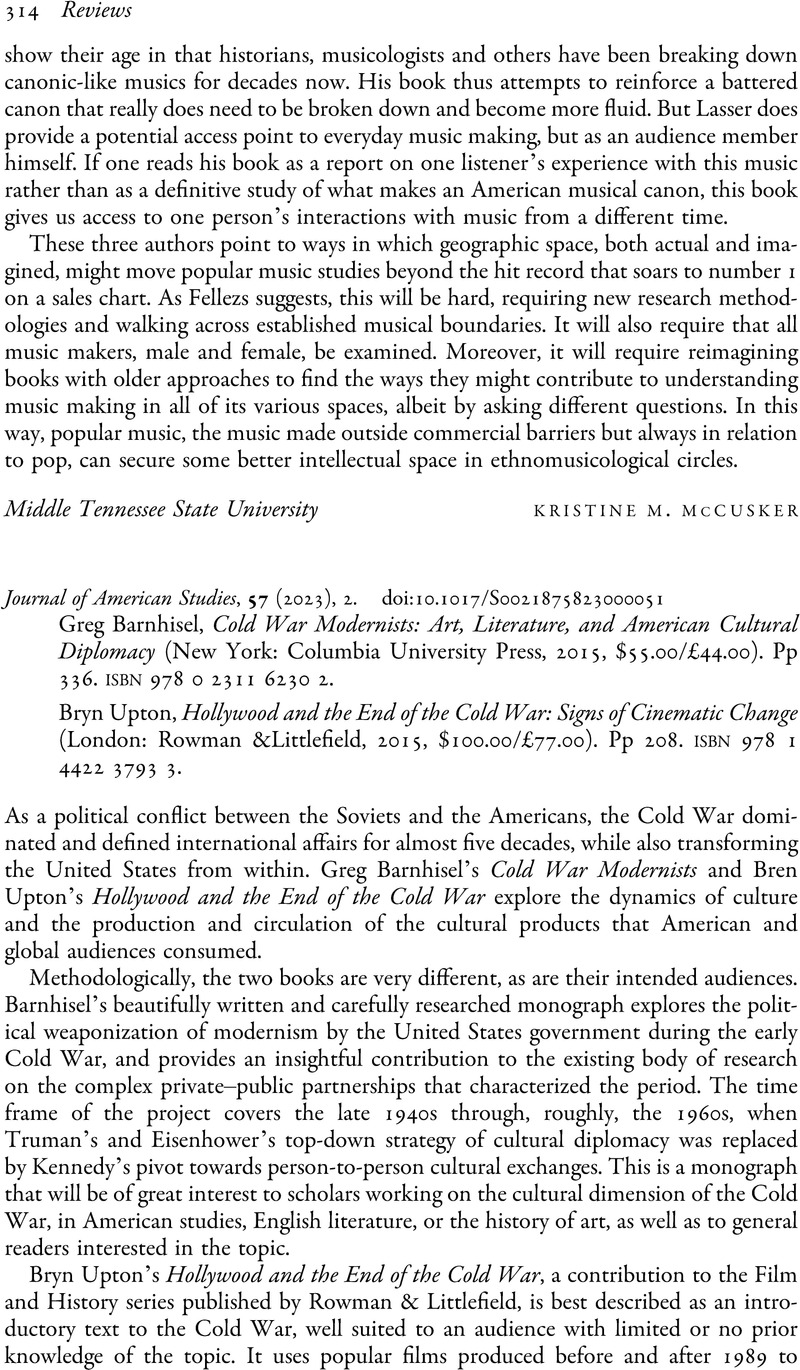No CrossRef data available.
Article contents
Greg Barnhisel, Cold War Modernists: Art, Literature, and American Cultural Diplomacy (New York: Columbia University Press, 2015, $55.00/£44.00). Pp 336. isbn 978 0 2311 6230 2. - Bryn Upton, Hollywood and the End of the Cold War: Signs of Cinematic Change (London: Rowman &Littlefield, 2015, $100.00/£77.00). Pp 208. isbn 978 1 4422 3793 3.
Review products
Greg Barnhisel, Cold War Modernists: Art, Literature, and American Cultural Diplomacy (New York: Columbia University Press, 2015, $55.00/£44.00). Pp 336. isbn 978 0 2311 6230 2.
Bryn Upton, Hollywood and the End of the Cold War: Signs of Cinematic Change (London: Rowman &Littlefield, 2015, $100.00/£77.00). Pp 208. isbn 978 1 4422 3793 3.
Published online by Cambridge University Press: 19 April 2023
Abstract
An abstract is not available for this content so a preview has been provided. Please use the Get access link above for information on how to access this content.

- Type
- Review
- Information
- Journal of American Studies , Volume 57 , Special Issue 2: Food, Health and Welfare in the Long Twentieth Century , May 2023 , pp. 314 - 319
- Copyright
- Copyright © The Author(s), 2023. Published by Cambridge University Press in association with the British Association for American Studies



